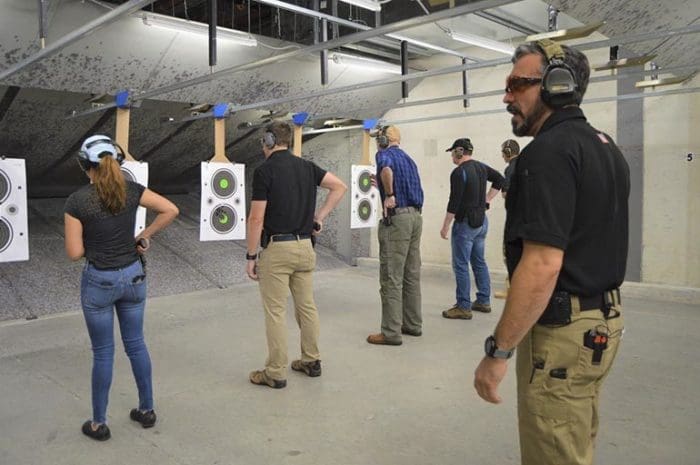If you want to reap the harvest, you have to first work the land. As in all things, improving your shooting — and shooting faster, in particular — comes from disciplined effort, practiced on a regular basis.
Understanding Speed
Shooting fast is a combination of two factors, economy of motion and flawless execution. That’s it. The idea of moving the body faster is the first thing people think of when they want to increase their speed and it’s the reason they usually struggle.
It doesn’t matter what you did that one time on the range. All that really matters is what you can do on a regular basis. The connection between those two factors — economy and execution — is consistency. You can’t have on-and-off-again economy of motion nor can you have occasional perfect execution. You have to practice until you can display both of them at a reasonable and sustainable level.
Trim the Fat
When it comes to economy of motion many people misinterpret this as moving faster. That’s not it at all. If you present the handgun to target with a lot of unnecessary, extraneous motion and your sights aren’t aligned because you moved so fast, have you really accomplished anything?
Economy of motion is about using the minimal amount of movement necessary to accomplish a task. Nothing more than what’s absolutely needed. When I’m working with students, one of the easiest ways to improve their performance is to get rid of all the crap, all extra, un-needed motion and moves they make that only serve to complicate the process and slow them down.
All that superfluous movement isn’t needed. Everything from leaning to hunching to drooping and everything in between. Have a friend video your draw stroke. It’s a great way to see what it is you’re really doing that can be eliminated and will improve your speed.
Make Fewer Mistakes
At some point you need to learn what’s acceptable performance for the shot required. What’s reasonable to expect and what isn’t. That’s based on time and distance. This concept will help you make progress toward achieving more perfect execution. When you’re pushing the boundaries of your performance, the difference mostly comes in reducing the number of mistakes you make.
In this case, you have to execute your technique that has been synthesized to the bare minimum. I’m talking about out of a 100 presentations you are hitting 80% or better to the standard you set forth for yourself. In many cases the key at this level will be adjusting your speed. I tell students over and over do not shoot faster than you can guarantee the shot. How do we get there is all hard work.
Crawl, then Walk, then Run
When we introduce a subject in our classes — whatever it may be — it starts out with dry fire practice. The progression is to work at a speed at which you can think your way through the technique. Since many techniques are based around several micro tasks performed in a logic sequence, it can be overwhelming for many students.
To help students process this, we progress through three training speeds, slow, half and full speed. Slow speed is where you put in the real hard work. It can feel painfully slow, but it allows you to learn to execute the particular technique flawlessly. “Slow is smooth and smooth is fast” is a cliche for a reason…it really works. Continue to work at slow speed until you have the technique down and can reliably repeat it.
Half speed is where you begin see your hard work start to pay off. As speed gradually increases your hit ratio should remain about the same. If it does, that reinforces the hard work you put in at slow speed. Stay at half speed until your results are consistent and repeatable.
Full speed is where we pressure test our technique. If you’ve been putting in the hard work from the beginning, you should see at least an 80% hit ratio on your baseline results at full speed. When you follow this process the major takeaway is you’ve achieved consistency. It’s impressive for sure.
After you’ve reached this level it really boils down to splitting hairs. Continued practice and attention to detail will let you maintain your speed and your hit ratios. All while making marginal improvements around the edges.
The problem with the industry is that most folks want to start out at this level and get frustrated when they ; it is not a gear issue; it is a training issue. Always will be…
